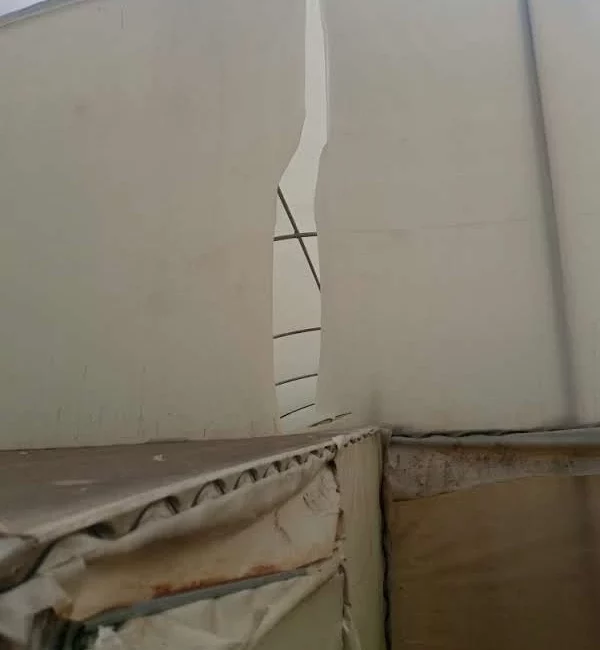Greenhouse Construction in Kenya
Kenya, the verdant heart of East Africa, pulsates with the rhythm of agriculture. From rolling tea plantations to vibrant fruit orchards, its landscapes paint a picture of bountiful growth. But beneath the sun-kissed fields lies a burgeoning secret: the rise of greenhouse farming. These havens of controlled climates and optimized cultivation are revolutionizing the way Kenyans grow, and Eunidrip Irrigation Systems is proud to be part of this exciting journey.
Table of Contents
But before you envision rows of thriving crops bathed in filtered sunlight, a crucial question emerges: how much does it cost to build a greenhouse in Kenya? The answer, dear reader, is a tapestry woven with several threads.
Cost of Greenhouse Construction in Kenya
Kenya’s verdant fields whisper a new promise: the flourishing realm of greenhouse farming. These controlled environments offer bountiful harvests and year-round growth, but a fundamental question arises: what is the cost of greenhouse construction in Kenya?
The answer, dear reader, is a vibrant tapestry woven with several threads. To unravel this cost complex, let’s embark on a journey through numbers and insights, aided by a helpful table:
Greenhouse Construction Costs in Kenya
| Factor | Price Range (Ksh) | Notes |
| Size: | 50,000 – 600,000+ | Bigger greenhouses naturally cost more. |
| Materials: | ||
| – Wooden Structures | 50,000 – 150,000 | Affordable but less durable. |
| – Metallic Frames | 200,000 – 400,000+ | More durable but costlier. |
| Location: | Varies | Rural areas might be cheaper for materials, while urban centers might have higher labor costs. |
| Technology: | 0 – 300,000+ | Basic greenhouses require no technological investment, while advanced options like automated irrigation and climate control systems add significantly to the cost. |
| Irrigation Systems: | 10,000 – 50,000+ | Eunidrip Irrigation Systems offers customized solutions to fit your budget and greenhouse needs. |
Remember, these are just estimates. The final cost depends on your specific choices, like size, materials, desired features, and chosen irrigation system.
Beyond the Numbers: Cultivating Value
While cost is crucial, consider these factors for a complete picture:
- Profitability: Greenhouses can be highly profitable thanks to increased yields and shorter harvest cycles. However, factors like market demand, crop selection, and management skills play a vital role.
- Investment for the Future: A well-built greenhouse is an investment that can last for years, providing consistent returns and empowering sustainable agricultural practices.
How profitable is greenhouse farming in Kenya?
Now, let’s address the elephant in the greenhouse: how profitable is greenhouse farming in Kenya? The answer is a resounding “It depends.” Tomatoes, peppers, and leafy greens thrive under controlled conditions, promising high yields and shorter harvest cycles. But market forces, crop choices, and initial investment significantly impact profitability.
Cheapest Doesn’t Always Mean Best: While building the most affordable greenhouse might seem tempting, remember – quality matters. A poorly constructed or ill-equipped greenhouse can lead to crop losses, higher maintenance costs, and ultimately, disappointment. Investing in durable materials, reliable irrigation systems like those offered by Eunidrip, and expert advice can be the stepping stone to long-term success.
Finding Your Greenhouse Sweet Spot
Small wonders: Ksh. 50,000 to Ksh. 150,000 can get you started with a basic wooden greenhouse, perfect for testing the waters of hydroponics or tending to a cherished herb garden.
Growing ambitions: For those serious about scaling up, a Ksh. 200,000 to Ksh. 400,000 investment in a metallic frame greenhouse with basic climate control features can open doors to diverse crops and increased profitability.
Tech-savvy havens: If automation and cutting-edge technology beckon, be prepared to invest Ksh. 400,000 and beyond for greenhouses equipped with advanced sensors, automated irrigation systems like Eunidrip’s offerings, and sophisticated climate control mechanisms.
Best greenhouse in Kenya
Kenya’s agricultural landscape shimmers with a new allure – the rise of greenhouses. These controlled havens promise bountiful harvests and year-round growth, but a crucial question emerges: with such diversity, what is the “best” greenhouse in Kenya?
The truth, dear reader, is an emerald kaleidoscope. There’s no single, shimmering answer, for the best greenhouse lies within the intricate dance of your needs, resources, and aspirations.
Types of greenhouses in Kenya
To navigate this verdant maze, let’s explore the enchanting realms of greenhouse types:
| Type | Description | Strengths | Weaknesses |
| Tunnel Greenhouses: | The most common and affordable option, featuring a curved, polyethylene-covered frame. | Easy to construct, cost-effective, good for basic crops. | Less durable than other types, limited ventilation, not ideal for extreme weather. |
| A-Frame Greenhouses: | Classic, triangular design often made of wood or metal. | Simple to build, aesthetically pleasing, suitable for moderate climates. | Lower light transmission, limited height and space, vulnerable to strong winds. |
| Quonset Greenhouses: | Semi-circular structure similar to tunnel greenhouses, but sturdier with greater headroom. | Durable, good ventilation, efficient use of space. | More expensive than tunnel greenhouses, complex construction process. |
| Venlo Greenhouses: | High-tech havens with advanced ventilation and climate control systems. | Optimal growing conditions, year-round production, increased yields. | Highest initial investment, complex technology requires expertise. |
Beyond the Blueprint
Remember, the ideal greenhouse is more than just bricks and mortar. Consider these crucial factors:
- Your Budget: From budget-friendly tunnels to tech-savvy marvels, your financial resources dictate the realm you can explore.
- Your Crop Aspirations: Delicate herbs thrive in controlled environments, while sturdier vegetables might flourish in simpler structures.
- Your Skills and Knowledge: Are you a seasoned green thumb or a curious novice? Choose a structure that aligns with your technical expertise.
- Your Location and Climate: Consider factors like wind, sunlight, and rainfall when selecting a suitable design and materials.
Eunidrip, Your Partner in Greenhouse Construction in Kenya
As your trusted partner in agricultural advancement, Eunidrip Irrigation Systems stands by your side, offering:
- Expert guidance: Our team of agricultural specialists can help you navigate the complexities of greenhouse selection and irrigation solutions.
- Customizable irrigation systems: From basic drip systems to automated marvels, we cater to every greenhouse need.
- Unwavering support: From installation to maintenance, we’re here to ensure your greenhouse flourishes.
There’s no “one size fits all” answer to the “best greenhouse in Kenya” question. The ideal haven blossoms from a careful dance of your needs, resources, and dreams. Embrace the spirit of exploration, seek expert guidance, and remember, Eunidrip is your partner in cultivating a brighter, greener future, one perfectly-watered sprout at a time.
Eunidrip’s Role in Your Greenhouse Construction in Kenya
As your trusted partner in agricultural advancement, Eunidrip Irrigation Systems stands by your side, offering:
- Customizable irrigation solutions: From basic drip systems to automated marvels, we cater to every greenhouse need.
- Expert guidance: Our team of agricultural specialists can help you navigate the complexities of greenhouse construction and irrigation.
- Unwavering support: From installation to maintenance, we’re here to ensure your greenhouse flourishes.
Embrace the Future of Kenyan Farming
Greenhouse farming presents a future brimming with possibilities. It empowers Kenyans to:
Increase food security: Controlled environments and optimized yields enhance food availability and reduce dependence on unpredictable weather patterns.
Grow niche crops: Exotic fruits and vegetables can be cultivated locally, fostering diversification and economic growth.
Empower small-scale farmers: Greenhouses offer opportunities for income generation and improved livelihoods in rural communities.
How do I start a greenhouse business in Kenya?
Starting a greenhouse business in Kenya can be a rewarding and profitable venture, offering year-round harvests and increased control over your crops. Here’s a step-by-step guide to help you get started:
1. Develop Your Business Plan
- Market Research: Identify potential crops in demand, research their profitability and growing requirements. Analyze potential competitors and gaps in the market.
- Financial Planning: Estimate startup costs for greenhouse construction, materials, seeds, irrigation, labor, and operational expenses. Project potential revenue and determine your break-even point.
- Legal and Regulatory Requirements: Consult agricultural authorities for necessary permits and licenses. Register your business name and choose a legal structure.
2. Choose Your Greenhouse
- Size and Type: Consider your budget, crop choices, and available space. Decide on a suitable greenhouse type like tunnel, A-frame, Quonset, or Venlo based on your needs and resources.
- Materials: Opt for durable materials like metal frames and UV-protected polycarbonate sheets.
- Location: Choose a well-drained, sunny area with access to water and electricity. Consider proximity to your market or transportation options.
3. Set Up Your Irrigation System
- Efficient irrigation is crucial for greenhouse success. Eunidrip Irrigation Systems offers customized drip systems tailored to your greenhouse size, crop needs, and budget.
- Proper irrigation minimizes water waste, optimizes resource use, and maximizes yield.
4. Prepare Your Growing Environment
- Soil Preparation: Analyze your soil’s pH and nutrient levels and amend accordingly. Raised beds provide good drainage and are ideal for greenhouse cultivation.
- Climate Control: Install ventilation systems and shade cloth to manage temperature and humidity. Consider investing in automated climate control systems for advanced operations.
5. Select Your Crops
- Choose crops well-suited to greenhouse conditions and with good market demand. Start with a manageable variety and expand as you gain experience.
- Consider factors like growth cycles, harvest yields, storage requirements, and potential profit margins.
6. Marketing and Sales
- Develop a marketing strategy to reach your target audience. Build relationships with potential buyers, local distributors, or supermarkets.
- Consider online marketing, direct sales, and participation in farmers’ markets or agricultural exhibitions.
7. Ongoing Management and Maintenance
- Regularly monitor your crops, check for pests and diseases, and implement necessary pest control measures.
- Maintain your greenhouse infrastructure, irrigation system, and equipment to ensure proper functioning.
- Keep detailed records of your operations, costs, and yields for effective management and future expansion.
Additional Resources
- Eunidrip Irrigation Systems: We offer expert guidance, customized irrigation solutions, and ongoing support for your greenhouse business.
- Ministry of Agriculture: Provides information on regulations, best practices, and agricultural support programs in Kenya.
- Kenya Agricultural and Livestock Research Organization (KALRO): Offers research findings, training programs, and technical assistance to Kenyan farmers.
Effective Marketing Strategies for Your Kenyan Agricultural Produce
Kenya’s fertile fields brim with vibrant possibilities, and your farm is a treasure trove of quality produce. But the journey from field to fork isn’t complete without effective marketing. Worry not, dear farmer, for several avenues await to showcase your agricultural bounty to Kenyan consumers. Here are some potent strategies, with a special spotlight on the power of online platforms like Advert.co.ke and Muhuga.com:
1. Know Your Audience
Understanding your target consumers is essential. Are you targeting local markets, organic enthusiasts, or restaurant suppliers? Tailor your message and channels accordingly.
2. Embrace Online Marketplaces
Advert.co.ke and Muhuga.com rise as champions in this arena. These online platforms connect farms directly with consumers, eliminating middlemen and maximizing your profit. With user-friendly interfaces and robust search filters, reaching your ideal buyer becomes a breeze.
- Create compelling listings: Use high-quality photos, detailed descriptions, and competitive pricing to entice buyers.
- Highlight your strengths: Are you organic? Do you offer unique varieties? Showcase what sets you apart!
- Engage with potential customers: Respond promptly to inquiries, be transparent about your practices, and build trust.
3. Tap into social media
Facebook, Instagram, and Twitter offer powerful platforms to connect with audiences. Share eye-catching photos of your harvest, engaging stories about your farm, and informative tips on using your produce. Run targeted ads, collaborate with food bloggers, and participate in relevant online communities.
4. Build Local Partnerships
Collaborate with restaurants, grocery stores, and farmers’ markets in your area. Offer tailored pricing, bulk deliveries, and consistent quality to secure reliable partnerships.
5. Brand Your Farm
Develop a recognizable logo, tagline, and consistent messaging. This creates a unique identity for your farm and builds trust among consumers.
6. Consider Traditional Methods
Don’t underestimate the power of local newspapers, radio advertisements, and even well-placed banners in your area. These can effectively reach specific demographics and generate local buzz.
7. Offer Value-Added Services
Consider going beyond raw produce. Offer pre-washed greens, chopped vegetables, or even subscription boxes with curated selections. This adds value and convenience for your customers.
8. Network and Learn
Attend agricultural workshops, farmer’s markets, and industry events. This allows you to learn from other farmers, discover new marketing strategies, and build valuable connections.
9. Embrace Mobile Technology
Utilize mobile payment systems like M-Pesa to make transactions easier for your customers. Consider developing a mobile app for ordering or farm visit bookings.
Also Read: How to advertise agricultural machinery in Kenya
FAQ
What are the different types of greenhouses in Kenya?
Popular options include tunnel greenhouses (affordable and easy to build), A-frame greenhouses (aesthetically pleasing), Quonset greenhouses (durable and spacious), and Venlo greenhouses (high-tech and efficient).
What are the best materials for a greenhouse in Kenya?
Timber is a common and affordable choice, but metallic frames offer greater durability. Polycarbonate sheets are standard for covering, with varying thickness and UV protection impacting cost.
What irrigation system is best for a greenhouse in Kenya?
Eunidrip Irrigation Systems offers customized solutions! From basic drip systems to automated marvels, we provide water-efficient and effective irrigation for all greenhouse types.
How do I control the climate inside my greenhouse?
Proper ventilation, shading systems, and appropriate materials play a crucial role. Eunidrip can help you choose the right equipment and strategies for optimal climate control.
How can Eunidrip help me with my greenhouse project?
We offer expert guidance on greenhouse selection, design, and construction. We also provide customized irrigation systems, installation, and ongoing support to ensure your greenhouse thrives.
Remember, building a successful greenhouse is a journey, not a destination. Embrace the process, learn from experts like Eunidrip, and watch your verdant dreams blossom into bountiful harvests.


